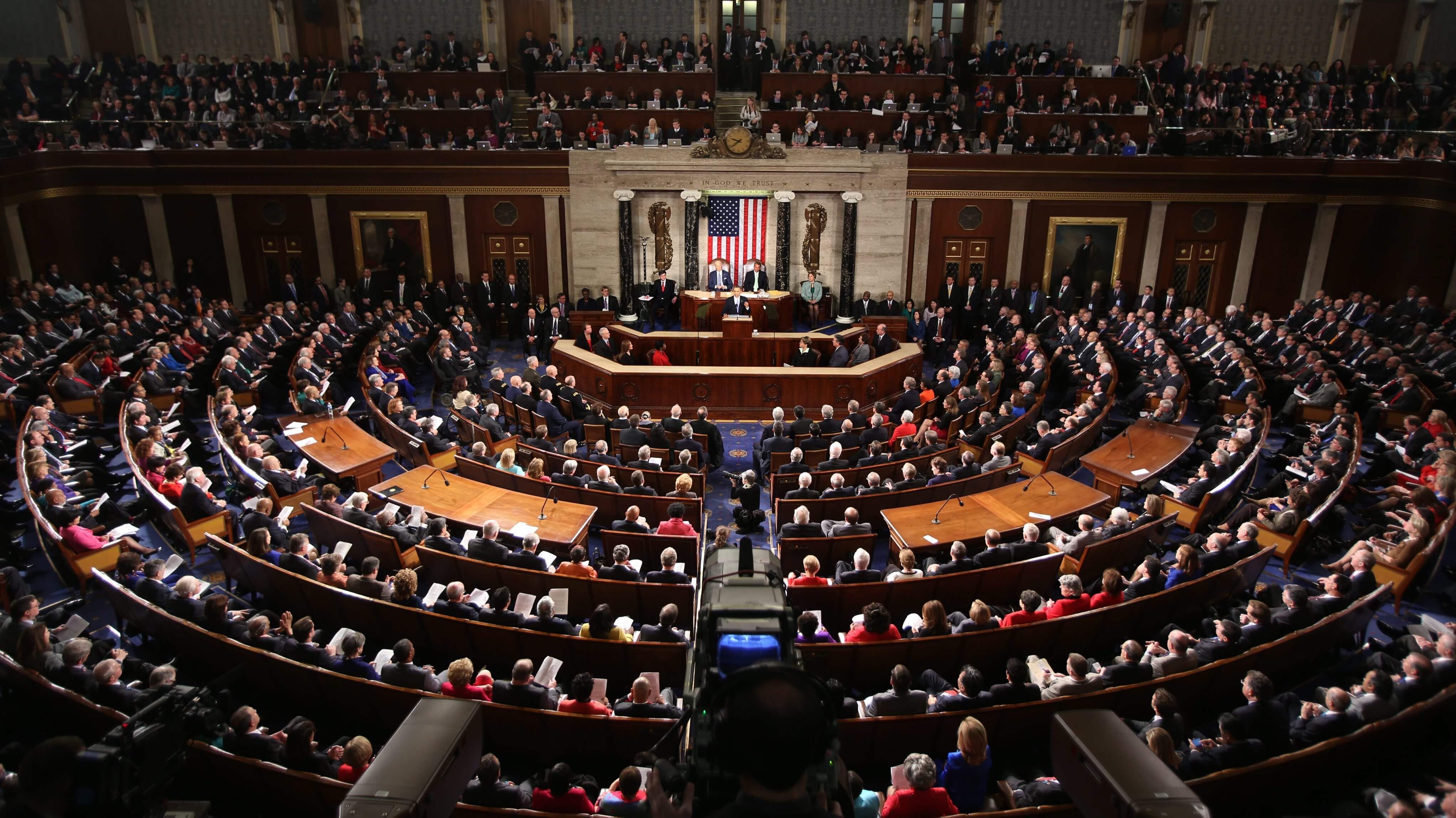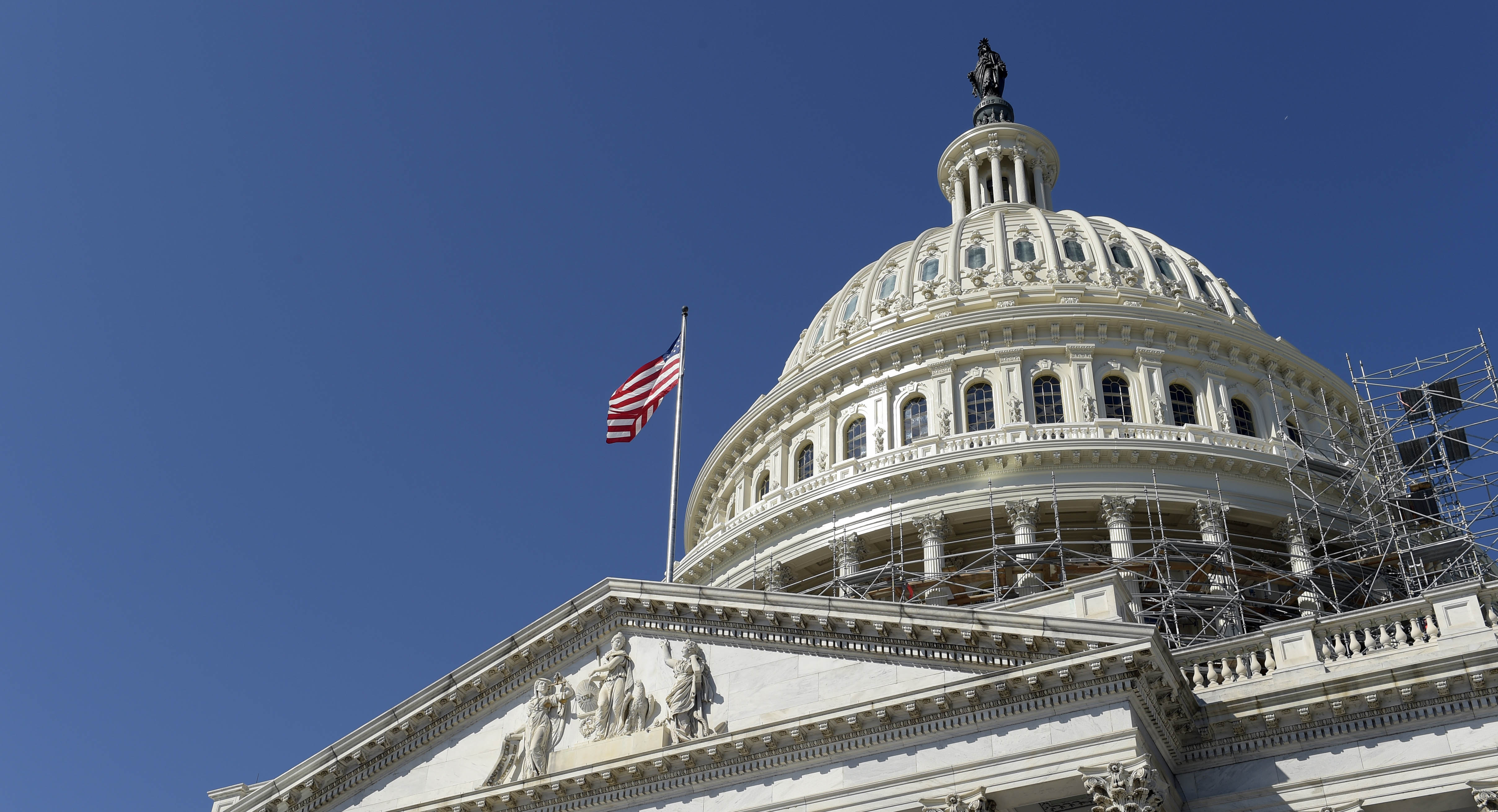Representative democracy is worth fighting for, even if we’ve never had one

Since I’ve been alive, our government has felt static and immovable. The same parties, platforms, and personalities have dominated the national stage for decades and resisted younger voices and new ideas. Our population and demographics have evolved dramatically over the past few decades, and yet the composition and demographics of our leadership remains frozen in time.
Now, as the Trump administration lays waste to our economic, political, and justice systems in its first 100 days, I’ve been reflecting on how our system of government has failed to meet the moment in this Constitutional crisis. How has the separation of powers decayed to this extreme? How have all of our institutional checks and balances imploded in the face of a blatantly corrupt and cruel authoritarian? How much of this could have been avoided in the Constitution, and to what extent is our zero-sum two-party system to blame?
I believe our system of government will be fundamentally changed as a result of the second Trump administration, one way or another. On one hand, recent months suggest that our government is incapable of expelling this fascist cancer, and that this assault on our institutions will reshape the balance of power irrevocably. Certainly, for many vulnerable communities and individuals, lives are already being destroyed as a result of cruel, racist policies from this White House. However, despite it all, I remain optimistic that we can take the right lessons from this season of chaos.
Democracy is a young person’s game
When I look at the voices on the national stage that claim to oppose Trump, I see far too few who resemble the Americans I live and work with every day. The average Senator is 65 years old, ready for retirement, with many significant voices in leadership positions for both parties in their 80s. As ever, they are overwhelmingly white and majority male. It’s not newsworthy that our elected officials don’t reflect our national demographics, but the fact is that when our democracy is under attack, we’re not sending our best and brightest to the front.
The Democratic Party’s rejection of new leaders for key House Oversight Committee positions, instead opting to elevate a septuagenarian who is literally dying of cancer to be the face of the party’s opposition, presents an existential threat to the party. Connelly ultimately stepped aside this week due to his health, but has put forward a spritely 70-year-old to succeed him, a relative newcomer who’s only been in Congress since 2001. Separately, an upstart 87-year-old floats the idea she might be interested in the position. All of these machinations as an energetic 85-year-old pulls the strings, ensuring continuity of her vision for government since she was first elected in 1987, before the internet.
This is not a recipe for disruptive action. These are not the voices this moment demands.
It’s long past time for a grateful nation to thank these politicians for their decades of public service and for them to pass the torch. Anything short of that is obscene. I’m not breaking new ground in suggesting term limits, or even age limits, for our elected officials. But I think the cracks in our democracy run deeper than a geriatric legislative branch. I contend that these are merely symptoms of our system of government’s inability to accommodate explosive population growth, and a legacy of anti-federalism and slavery that permeates our institutions.

Our representatives cannot possibly represent us
In these politicians’ defense, it’s virtually impossible not to become “out of touch” with the electorate considering how our country has grown and evolved. Shifting demographics and sustained population growth have transformed the country without transforming our elected officials in kind. We continue to shoehorn a system of government designed for communities of thousands into a global superpower of hundreds of millions, with predictably dysfunctional results.
I posted recently on Bluesky about how far removed from the demographics of the country’s founding we are today. In 1790 when the Constitution was enacted, the 65 members of the 1st US Congress each represented around 60,000 constituents on average. Today, with an estimated US population of over 340 million people, achieving a similar 1-to-60-thousand ratio would require nearly 5,700 representatives in the House.
Our current 435 representatives in the House each speak for more than 776,000 people on average, and projections for population growth suggest this will exceed one million by 2050.1 It’s impossible for one human to sufficiently represent the interests of three-quarters of a million people, and so we’re left with politicians who court the lowest common denominator, embracing centrism, complacency, and equivocation except in rare cases around urban centers. Aim down the middle, don’t take risks, and you’ll waltz into your 30th consecutive term.
This body’s failure to impeach President Trump in the past few months—despite flagrant corruption, rejection of the rule of law, and failure to comply with court orders—is evidence enough that our legislature is fundamentally broken. The institutional immune system to prevent authoritarian cancer from spreading has become ineffectual or, worse, complicit.
Representative democracy requires representatives who can advocate on our behalf, and who have a working understanding of their constituents’ concerns at a local level. Until we expand the House, and impose term limits to cycle new talent and fresh ideas, our legislature will remain frozen in amber. But if you can believe it, it gets worse.
Shedding the legacy of slavery
The intention of the Senate, and the compromise that created our bicameral legislature, at the time of the Constitution’s drafting was to offset the outsized influence of large states over smaller ones. This way, each state would have one chamber that reflected their relative populations (with infamous affordances to account for enslaved people), and another where each state operated on equal footing. However, as mentioned with the House of Representatives above, this system failed to account for the population explosion that ensued over the next 250 years.
At the time of the 1st US Congress in 1790, the ratio of population difference between the most populous (Virginia with around 748,000) and least populous (Delaware with 59,000) states was a ratio of around 12:1.2 Today, that ratio has exploded to 67:1 between California (with nearly 40 million people) and Wyoming (with around 588,000).3 The Senate is a vestigial organ that has mutated into a perversion of its original purpose, which now grants outsized influence to states with more cows than people and enables the tyranny of the minority.
As others have argued more eloquently than me, the Senate needs to be abolished and replaced with a system that is closer to representative democracy. Its history of white supremacy and minority-rule-by-design should be justification enough for any level-headed American to reject it. Today, it exists purely to enshrine the power of the Republican Party and enable them to block legislative agendas from duly elected presidents and congresspeople. A political organ, vestigial as it may be, that is self-reinforcing and unaccountable.
This issue is compounded by the fact that our federal executive branch is elected not by voters, but by an insulating layer of electors whose count and distribution is informed by both the count of Representatives and the count of Senators.3 This body was explicitly intended to prevent the masses from electing a bad actor as president—a task it has now failed at, in spectacular fashion, twice in eight years. But in reality, the Electoral College extends the problems of overrepresentation to the office of the presidency, which has cascading effects on our judiciary.
What can we do about this?
Considering the sweeping consolidation of executive power that the last few administrations have advanced, and the unilateral authority the president now commands with his bastardization of executive orders, I’d argue that the most pressing challenge our governmental system faces today is likely the Electoral College. There’s some remote cause for hope, however, as an agreement between states to award electoral votes to the winner of the national popular vote continues to inch forward.4 While Trump did win the popular vote in 2024, a compact like this could obviate the Electoral College and grant representative power back to individual voters in every state.5
Realistically, abolishing the Senate is a pipe dream, at least today. Packing the Supreme Court might feel more accessible, but not without broader support for reforming our institutions in Congress and the White House. But expanding the House of Representatives could be achievable in our lifetimes: if we’re able to win back the House in 2026 and install a new president in 2028, change might be possible coinciding with the 2030 census.

We don’t have to resent our government. We can do better.
Call me naïve, but I still reserve hope for the American Experiment. I believe this system of government can reclaim its throne as the model for the free world, but there will be labor in its coming. I certainly don’t have all the answers, but I believe that incremental change is possible, even where more dramatic reform isn’t.
- I’m hopeful that the National Popular Vote Interstate Compact could become a reality, obviating the Electoral College in my lifetime.
- I’m hopeful that after the current crop of silent generation and baby boomer representatives and senators exit their office—ideally by fresh faces defeating them in primaries—we can pass term limits and potentially age limits for elected officials in my lifetime.
- With new voices and ideas, I’m optimistic that we can expand the size of the House and explore a new framework for the Senate.
A refreshed legislative body, balanced by a minimized executive branch, can better represent the actual needs and concerns of their constituents and pass popular legislation like Medicare for All, or even a broader transformation roadmap like the Green New Deal. Perhaps we could even experiment further with ranked-choice voting, even at a local level, that could begin to erode the intractable two-party duopoly and welcome new parties and perspectives. With our current party paralysis and obstinate octogenarians, progress feels impossible. And yet, hope springs eternal.
If you’re reading this, and feel like you might be able to play a role in this change, I’d encourage you to explore running for office in your own community.
-
As it happens, my own congressman, Sean Casten (D-IL), has put forward legislation to expand the size of both the House and The Senate, using a formula of the total US population divided by the smallest state population to determine the total number of House seats. By my count, this would expand the House to around 580 representatives, growing by about a third from its current size. ↩
-
Here I’m deliberately using the total state populations, including women and enslaved persons, to account for who would be eligible to vote today and ignoring historical limitations. The populations eligible to vote at that time (free white males) tells a similar story, with a ratio of about 10:1 between the 110k men in Virginia and 12k in Delaware. ↩
-
There was a joke on Twitter years ago, likely during the 2016 election cycle, that for the life of me I can’t track down. But in essence, it posed a question to the founding fathers about how this system would need to be adjusted for a state like California that had 40 million people. George Washington replies, “what the hell is California?” ↩ ↩2
-
Its construction is clever, only going into effect after the participating states’ electoral votes account for a majority, ensuring this compact can guarantee the outcome. Antidemocratic sentiment in the slate of states considering this compact, however (Florida and Texas among them), casts doubt on whether we’ll see progress anytime soon. But Trump’s popular vote victory might actually help us here, if we can illustrate that the compact would require Californians’ electoral votes to go to Trump in this scenario. Anything to own the libs. ↩
-
A president friendlier to the rule of law and separation of powers would need to play a central role in reforming their own office, but it’s confounding why these clear weaknesses haven’t been addressed by previous administrations. Executive orders as they have been transformed, in particular, are an affront to our Constitutional legislative process, but Congress is inexplicably too self-loathing to assert itself here. ↩